Reader Alsadius visited Belfast in August 2018, and has agreed to share his experiences here.
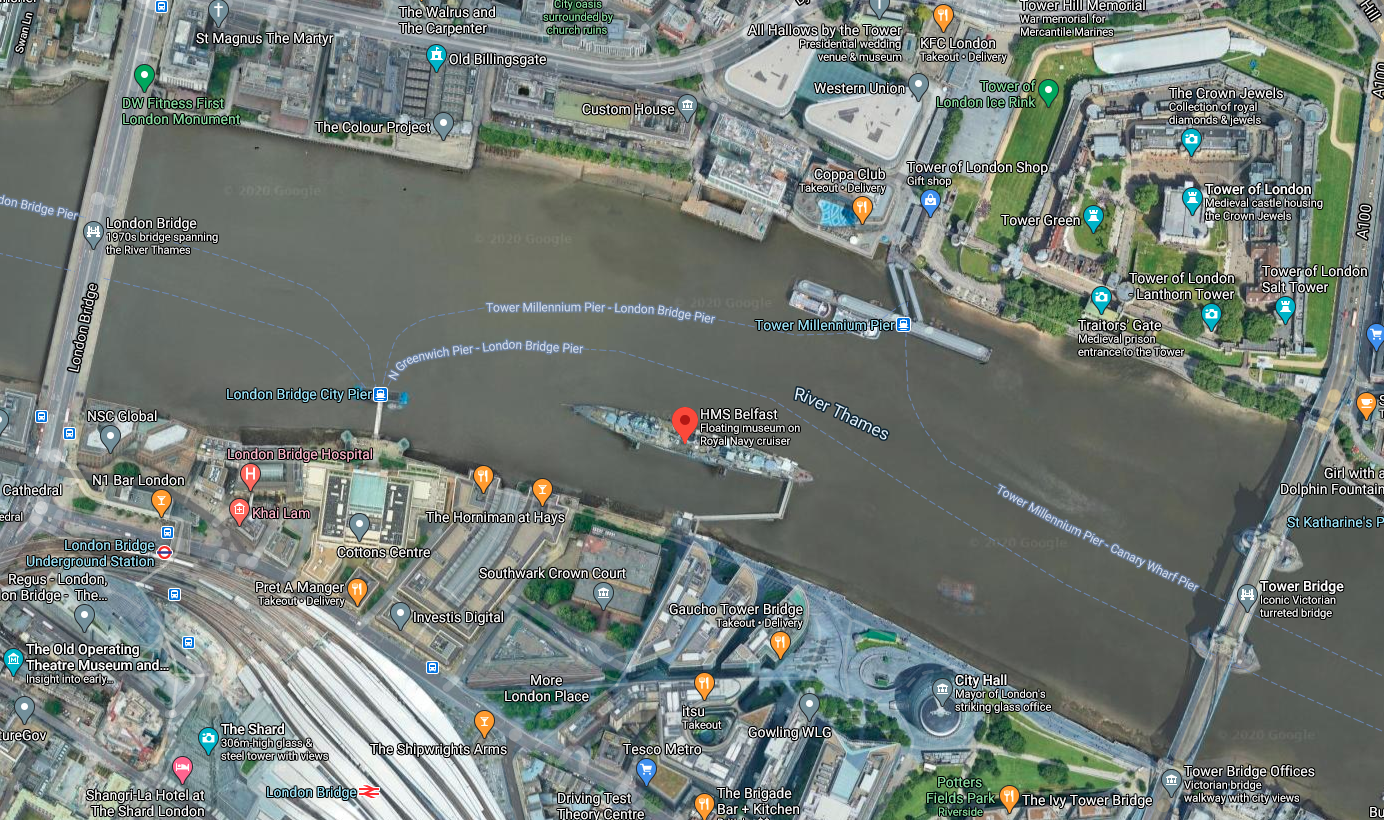
One of the things I planned to visit on our trip to the UK was the Portsmouth historic dockyard, whose review can be found here. But as we were wandering around London, I noticed a surprisingly large ship in the middle of the Thames. The World War II light cruiser HMS Belfast was preserved as a museum ship in basically the most accessible possible location for a museum, right in the heart of London.
Belfast was laid down in late 1936 as part of the pre-war military buildup, and commissioned in August 1939, less than a month before the war started. She spent the first couple months cleaning up German merchant shipping in the North Sea, and even won prize money (which would be abolished in 1948) for one capture. But she struck a German mine in November, broke her keel, and was nearly scrapped.
The Admiralty decided to keep her, though, so after almost three years of repairs and upgrades, she re-entered service in November 1942. She spent most of 1943 escorting convoys to Russia, but at the end of the year, she played an important role in the Battle of the North Cape, tracking KMS Scharnhorst on radar and allowing HMS Duke of York to intercept and sink her, in one of the last naval gun battles in history.
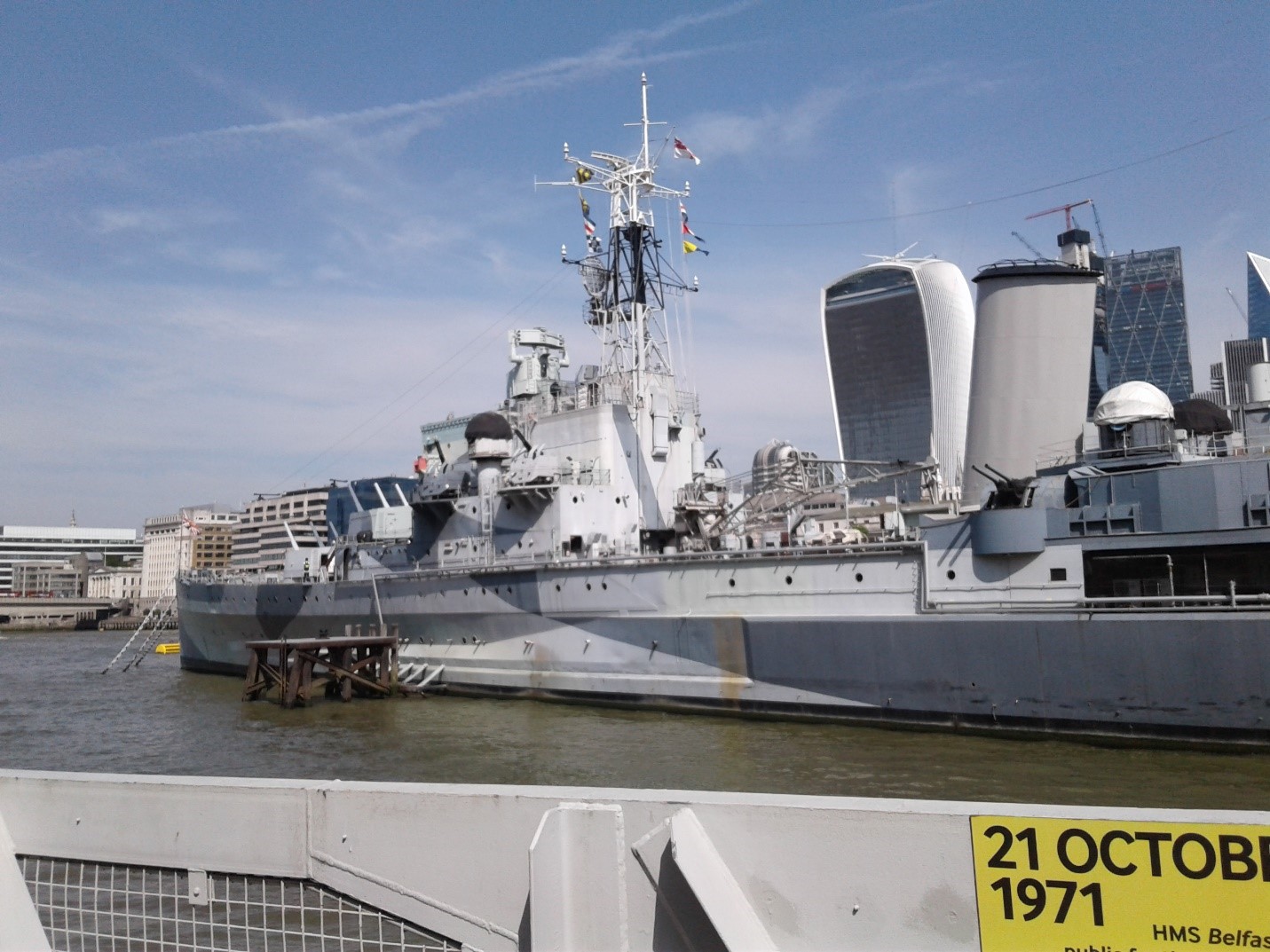
In 1944, she participated in a raid on the KMS Tirpitz, and was headquarters of a group of ships in the D-Day bombardments. Interestingly, Churchill wanted to see the bombardments in person, on Belfast. Despite opposition by Admiral Cunningham and General Eisenhower, he was dead-set on it until a personal intervention by the King finally dissuaded him from going.
Once the battle lines moved too far inland for her guns, she was refitted for service against Japan, but never served there before the Japanese surrender. She was, however, in Japan at the time the Korean War started, and served as a bombardment, anti-aircraft, and patrol ship. She was modernized again in 1956, served until 1963, and was in reserve, or used as a barracks ship, until 1970.
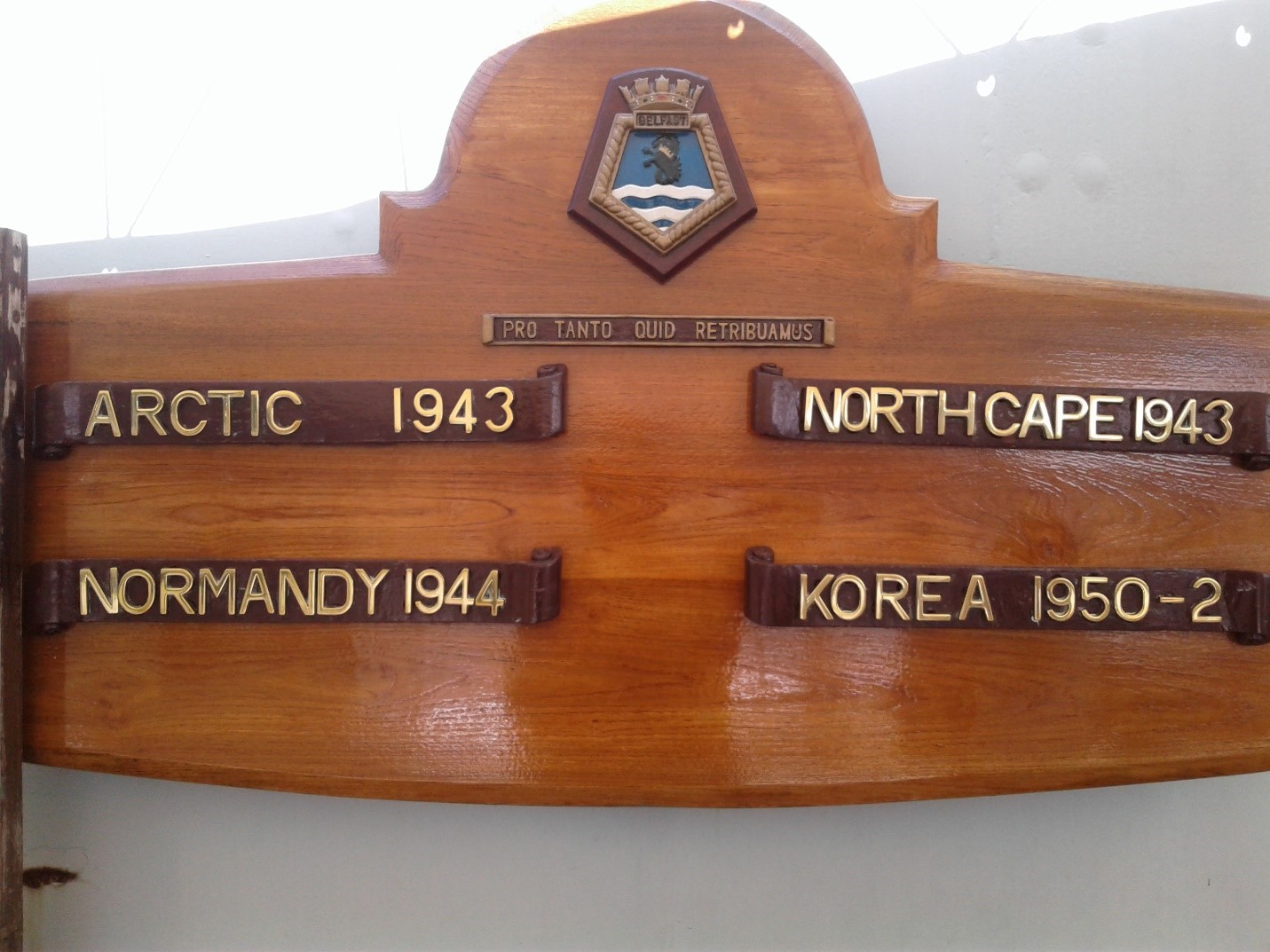
While plans were made to scrap Belfast, the Imperial War Museum asked to preserve one of her gun turrets. In the ensuing conversations, the idea of preserving a whole ship was raised. The government originally balked at the cost, but a private trust was created to fund the work, and the government turned it over in 1971. She was opened to the public on Trafalgar Day (October 21), 1971, as the first British museum ship saved since HMS Victory.1
The ship was a treaty light cruiser, mounting twelve fast-firing 6” guns in four triple turrets, and six torpedo tubes, as primary armaments. Armour was 4.5” on the belt, with deck armour up to 3” thick over the magazines. The four engines could generate 80,000 horsepower and drive the ship at 32 knots. Total displacement was 11,550 tons.
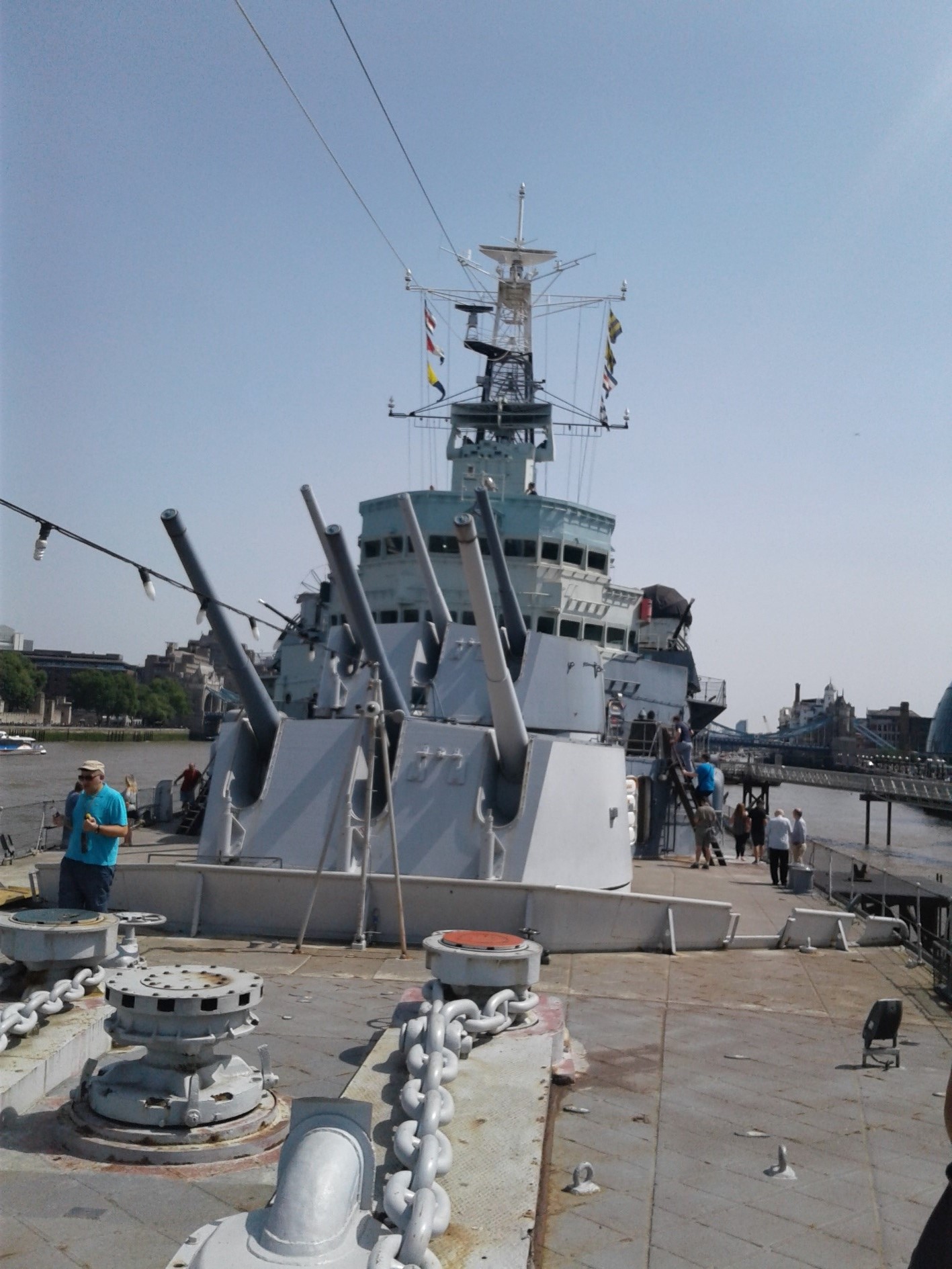
Overall, the experience was quite good. Most of the ship was accessible, the signage was usually quite good, the audio tour was better than most, and there were some demonstrations that were informative without being too cheesy. We spent about three hours there, though I tend to move fairly slowly through museums.
It’s worth noting that they’ve apparently taken the chaos of 2020 as a good time to do some refits on the ship, and so it’s currently being improved in various ways. Some of this is likely to change by the time it re-opens, which is currently scheduled for summer 2021.
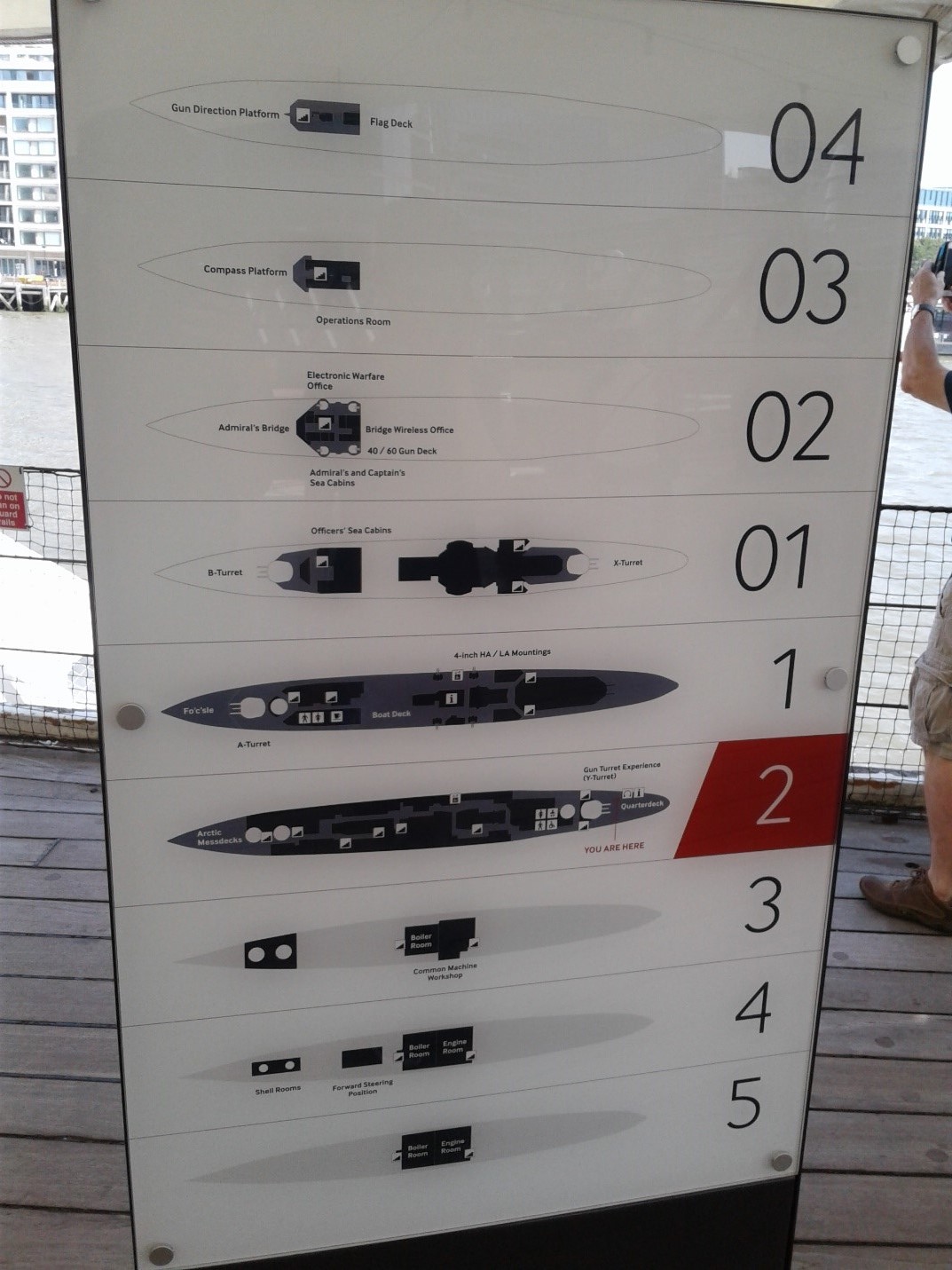
A map of the accessible parts of the ship. See also here.
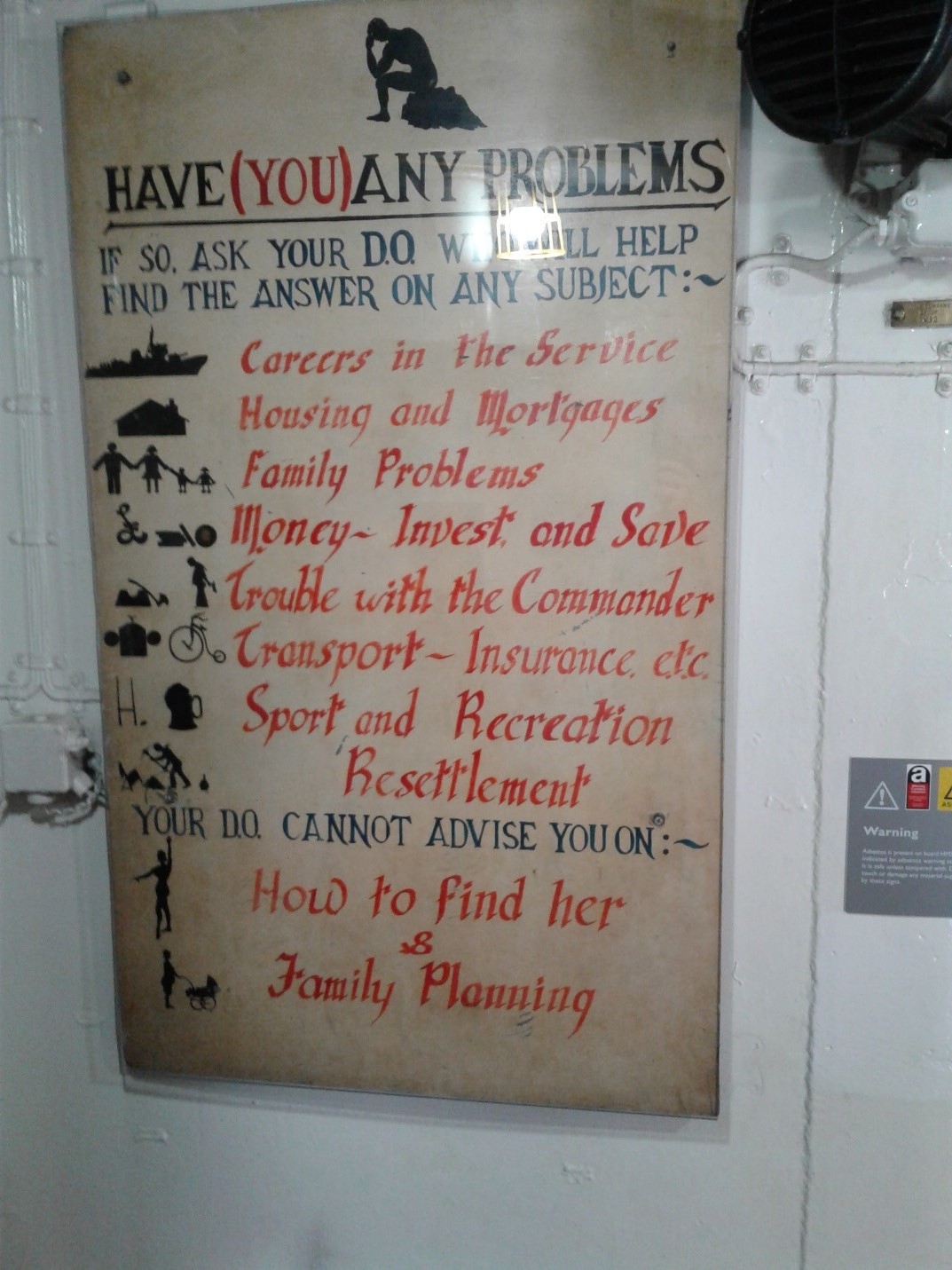
Also, some amusing vintage signage.
Probably the best part of the ship for me was the engine and boiler rooms. The machinery is no longer running, but the room imitates it well, with sound recordings, good signage, and a lot of machinery still in place.

The signage is pretty informative, all told.
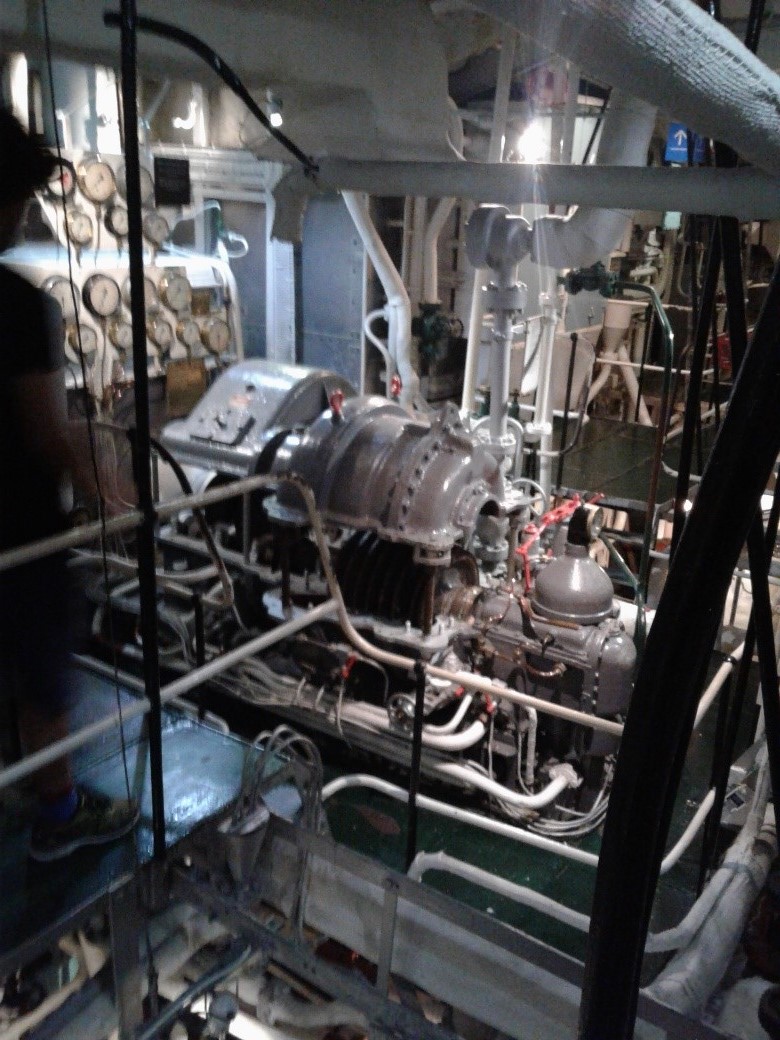
A high-power turbine, for fast movement.
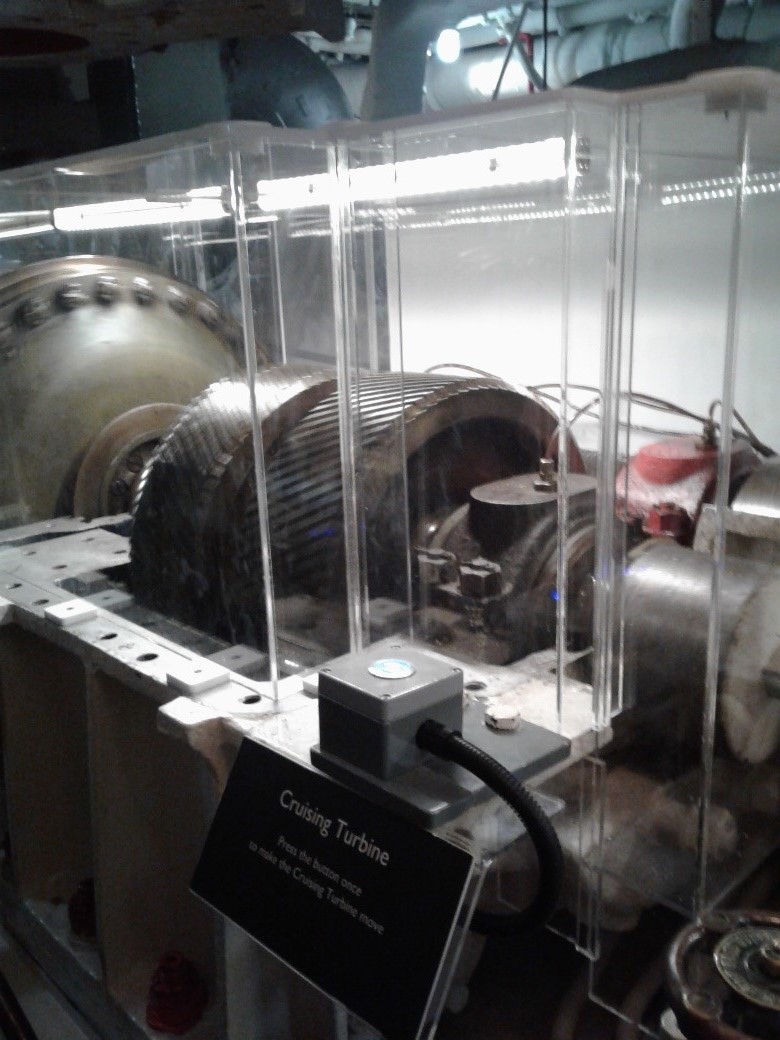
And a (substantially smaller) low-power turbine, for more fuel efficiency while cruising.
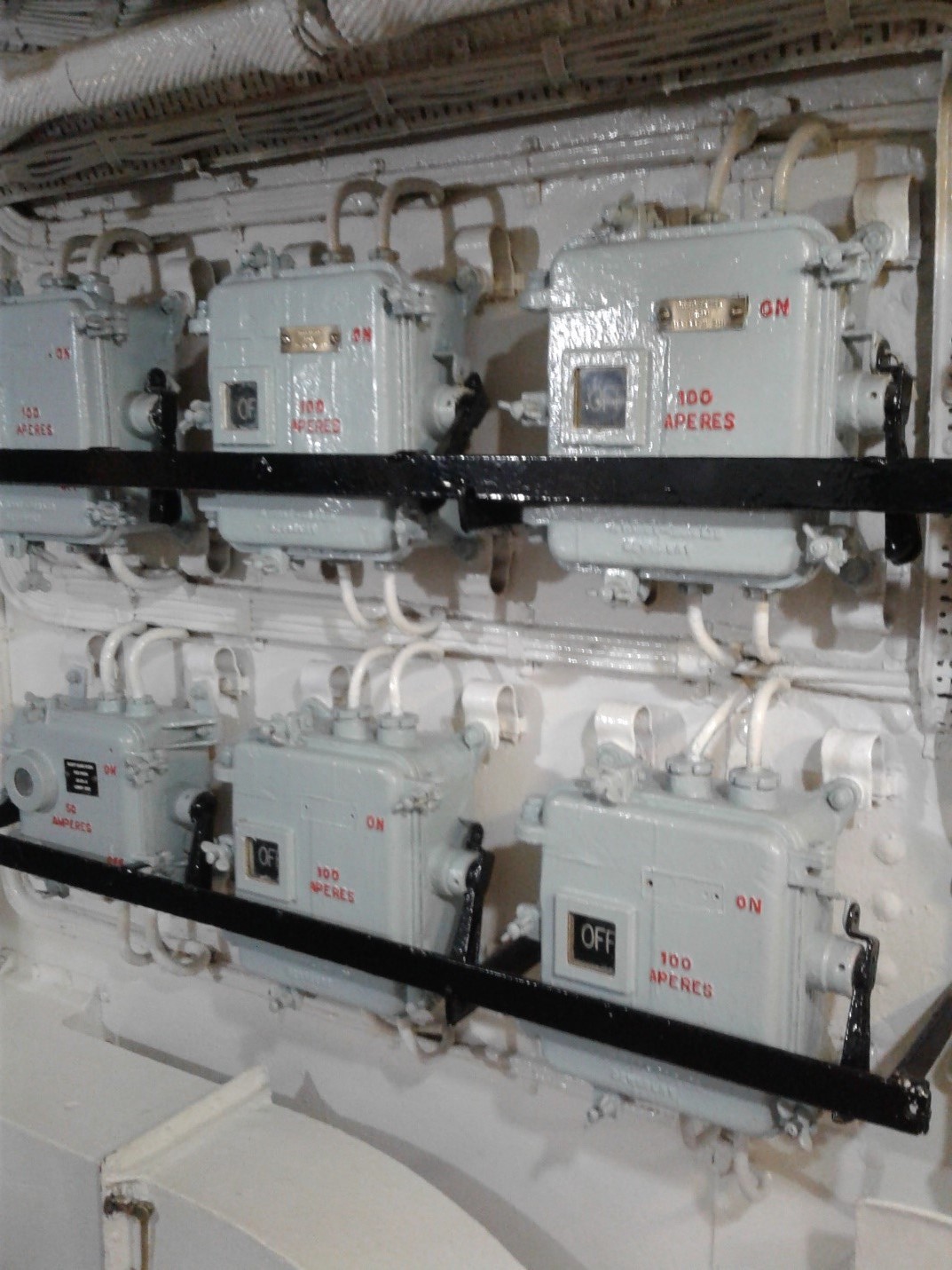
What looks like the original electrical system, though with modern safety bars to keep any idiot from flipping them on.
The turrets were also pretty good, though in fairness I’ve never been in a battleship turret to compare it to. Astonishing how 27 men could fit in there to work, though – it’s not terribly big. Unfortunately, my pictures from inside the turret don’t give much of a sense of the space, but you can see all the big guns. And we all know that big guns are the most important part.2
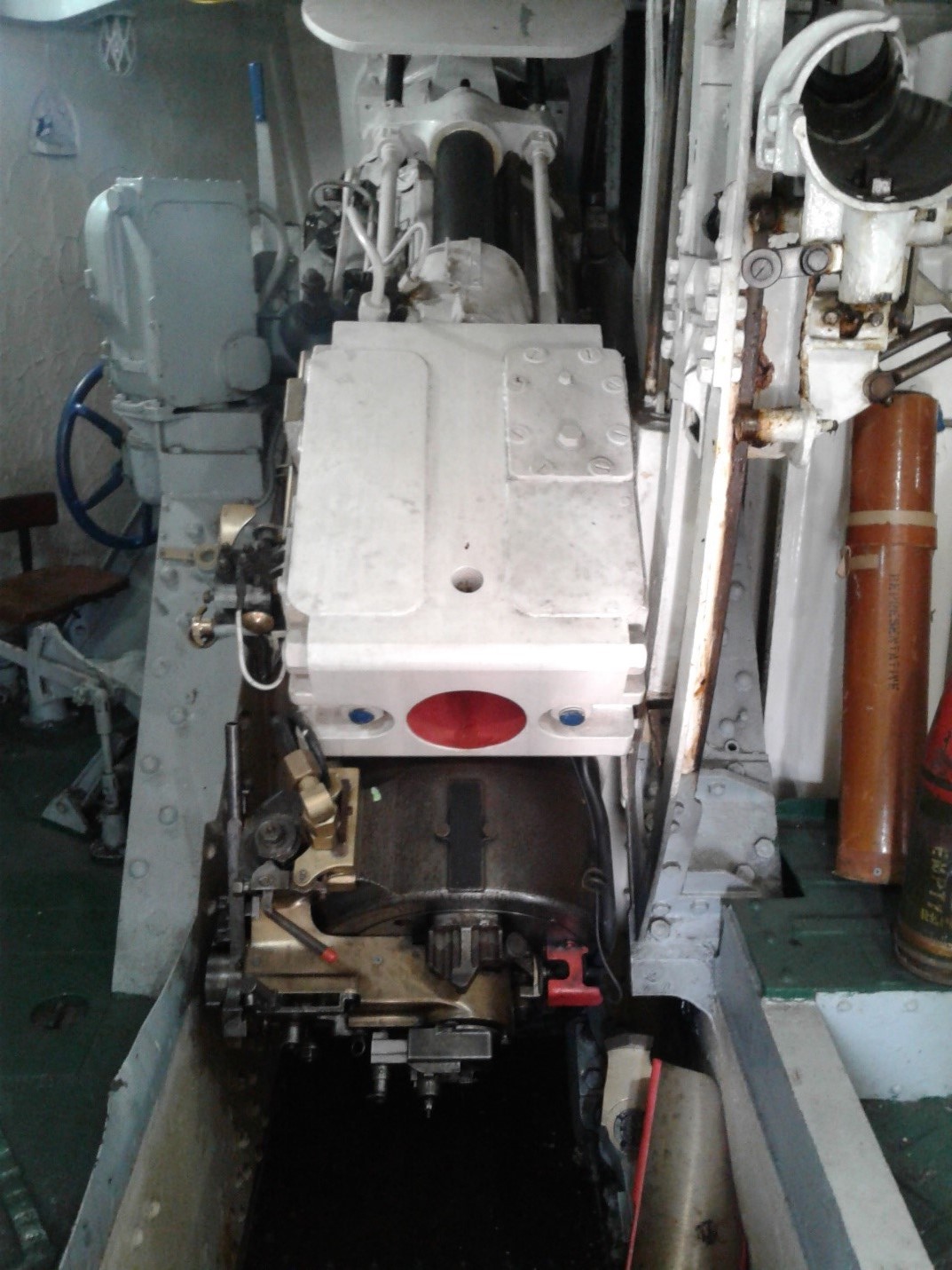
One of the 6” guns.
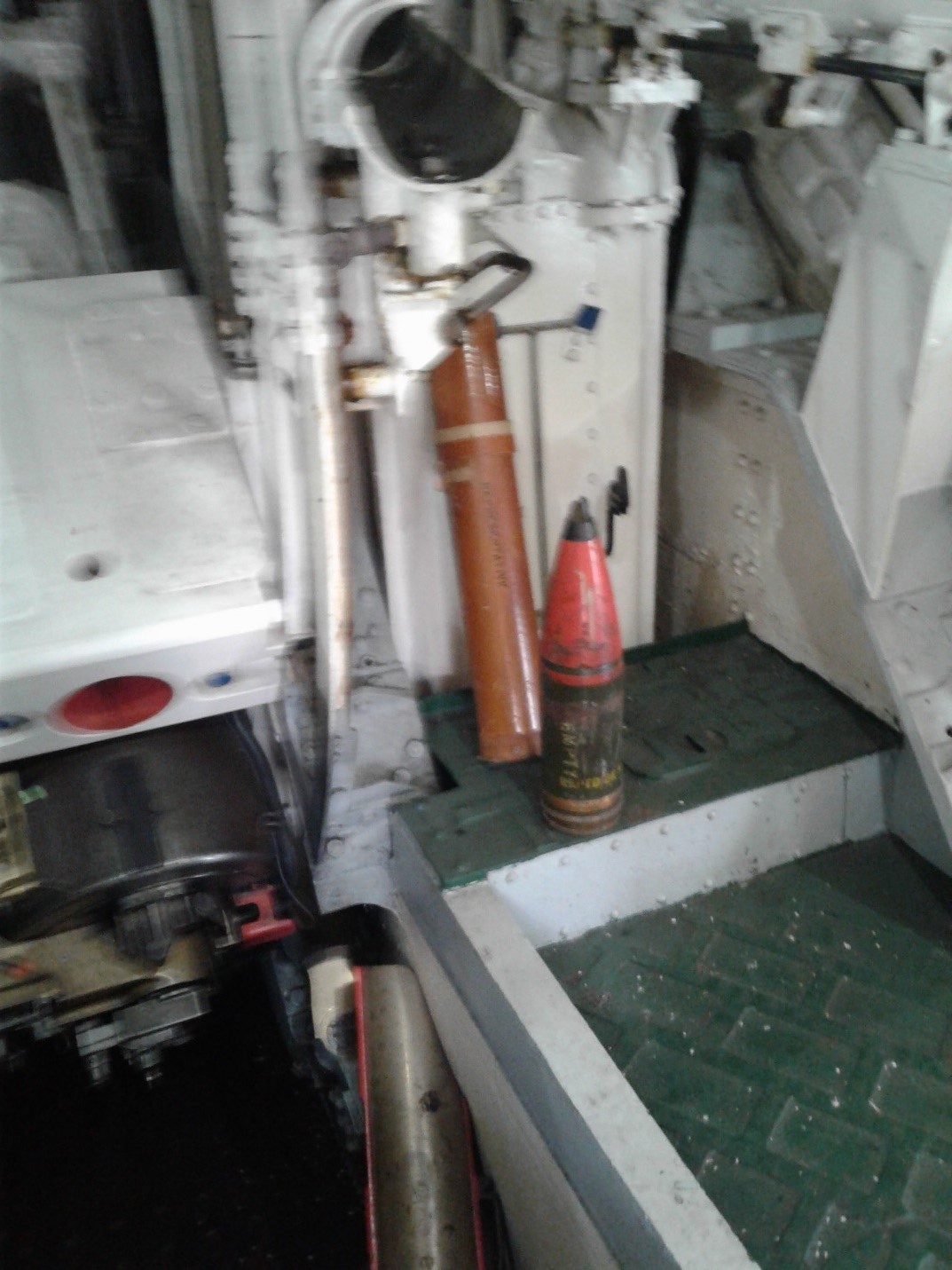
The propellant (orange canister) and shell for the gun. Sorry for the blurry photo.
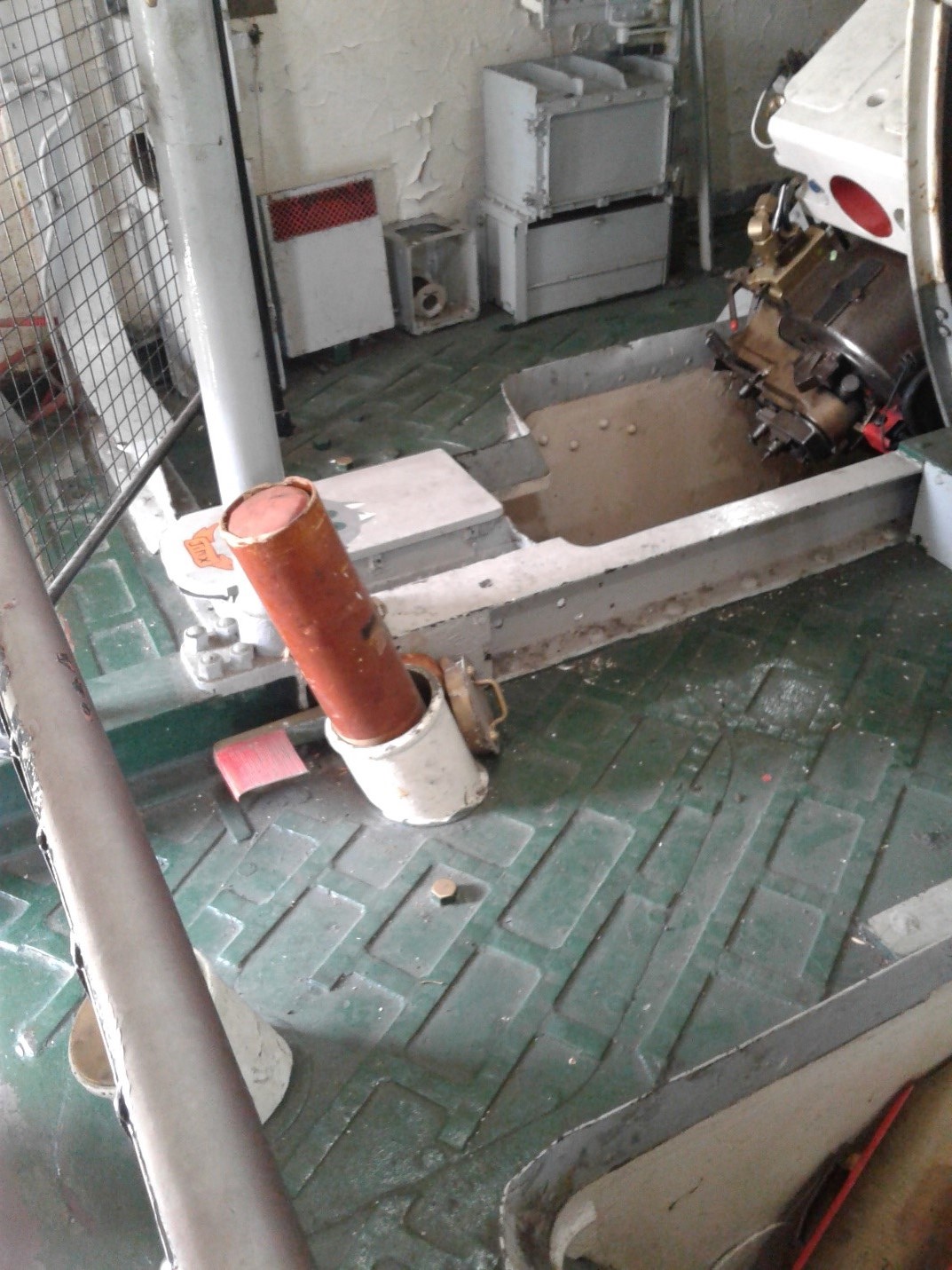
A feed tube for the propellant, brought up from the magazine below. These were light enough that they could be directly sent up, seemingly without a hoist. I suspect this kind of high-speed ammunition supply was necessary for the gun to be able to fire eight rounds a minute.
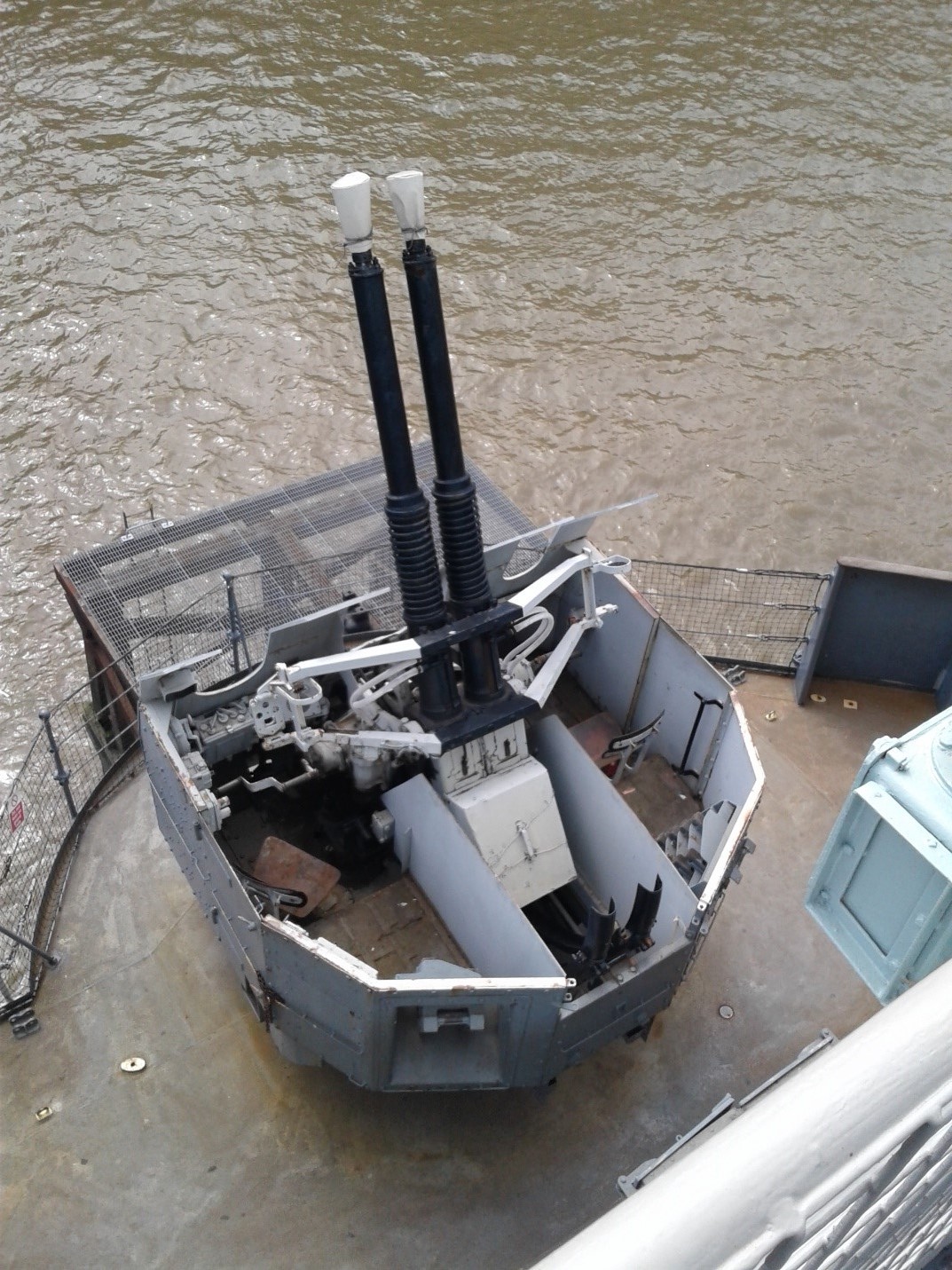
A twin 40mm AA mount
On the whole, it’s worth it for any reader of this blog who has a few spare hours in London. Any tourist to London is likely to get within a couple hundred yards of it anyway, and it’s in fairly good shape as a museum ship. It even has a non-cheesy gift shop. I’d recommend it.

Comments
Great review! I haven't been on Belfast in a decade or two, but she was my first museum ship. I remember when I was about 7 or 8 having great fun pointing one of the 40mm Bofors mounts (which could still traverse and elevate using handwheels) at things.
Incidentally, like Warrior which is now officially "HMS Warrior (1860)" as the name was in use for a shore establishment, Belfast is scheduled to be renamed "HMS Belfast (1938)" before the commissioning of the Type 26 frigate Belfast in the mid-2020s.
She was actually my first museum ship too, other than perhaps a visit to https://en.wikipedia.org/wiki/HMCS_Haida as a kid(like, 7-8 years old? If I'm remembering the right trip, I was bored.)
Also, Bean, I lol'd at your footnote.
If I had to describe Naval Gazing in a tweet-sized format, I'd use Footnote 2 verbatim.